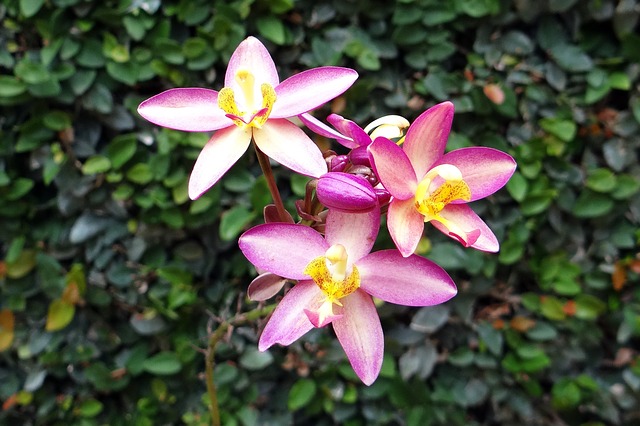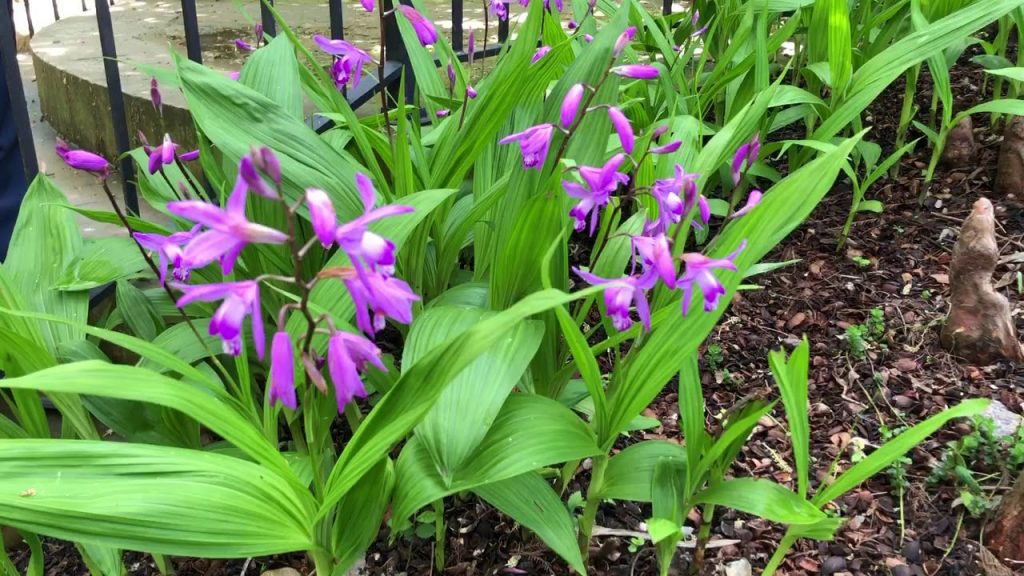Ground Orchid Biology
Ground Orchid, also called Philippine ground orchid or large purple orchid is a common plant with a swollen stem base and adventitious roots.
Ground Orchid belongs to the Orchidaceae family and its botanical name is Spathoglottis plicata
Ground Orchid Plant Description
It has leaves that are simple with parallel venation.
The leaves of large purple orchids are long, rather narrow, pointed, and pleated lengthwise.
The flowering stalks rise above the leaves and bear inflorescences of bright purple flowers.
These flowers are bisexual, complete, and zygomorphic.
The structure of each flower is different from that of an ordinary flower.
The calyx and corolla together form the perianth.
There are six perianth lobes arranged in two whorls, three in an outer whorl, namely, the sepals, and three in an inner whorl, namely the petals.
One of the petals is very different from the rest. It is known as the labellum or lip and is made up of three lobes – two side-lobes and one mid-lobe.
It forms the landing platform for insects.
The mid-lobe has a wide tip and a narrow base, at the end of which lie the two side-lobes which curve upwards. Just within the two side-lobes are two protuberances.
In the center of the flower lies a fleshy column that curves forwards towards the lip.
It is composed of the androecium and gynoecium which have fused.
There is only one another. The pollen grains have fused into two masses known as pollinia.
These are placed in two separate cavities in the upper part of the fleshy column and are covered by an anther cap.
The stigma is a sticky hollow below the pollinia. Separating the anther from the stigma is a structure called the rostellum. The ovary is inferior. Three carpels are obtaining numerous tiny ovules.
Ground Orchid Pollination
The ovary of the Ground Orchid develops into a capsule that hangs from the stem.
When the capsule is ripe, it splits open by three slits to allow the dust-fine seeds to be dispersed by the wind.
Flowers of the ground orchid are pollinated by bees, the color and shape of the petals, as well as the nectar present at the base of the lip, attract insects.
Therefore, pollination in Ground orchids occurs by both wind and insects.
As the flower blooms, it twists to bring the lip into a suitable position for the visiting insect to land on it.
When the insect lands on the lip of the flower and looks for nectar, it pushes upwards against the underside of the rostellum.
This loosens the other-cap, allowing the pollinia to fall forwards a little so that their ends are just beyond the rostellum.
As the insect crawls out of the Ground Orchid flower, the rostellum secretes a drop of sticky substance on the insect, and this causes the pollinia to adhere to the insect.
The insect then flies away with the pollinia, visits another flower in bloom, and deposits the pollinia onto the stigma of this flower while looking for nectar. Thus, cross-pollination is brought about.
The Ground Orchid pollination method is cross-pollination but it can also self pollinate itself.









